“Once a Mermaid, Always a Mermaid”
The Cut
2023
It wasn’t often a car would pass along U.S. 19, but when the slow rumble approached Weeki Wachee Springs, named by the Seminole Tribe, the mermaids would be waiting: smiling prettily in their bathing suits, beckoning vehicles to enter their employer’s parking lot. In 1946, former U.S. Navy officer Newton Perry scouted the Florida spring as an ideal spot to build a roadside attraction. A year later, he’d cleared out the heaps of abandoned wreckage and junk and built a rudimentary 18-seat theater into the limestone, allowing visitors to peer directly into the spring’s seemingly bottomless blue depths.
Perry trained local women to twirl underwater for long stretches without oxygen tanks—eating bananas, drinking bottles of Grapette, performing synchronized ballet—with their shared air hoses hidden out of sight. Together they formed a miraculous image: folkloric sirens come to life. By 1959, broadcast network ABC saw Weeki Wachee’s high profit potential and bought the site. A new million-dollar theater was developed to stage daily mermaid shows, with 400 seats and a speaker system. Later, Florida state officials took over the park. The mermaids never left.
In early 2020, Los Angeles–based photographer Chantal Anderson spent several days documenting performers at Weeki Wachee: a small group numbering around 20 mermaids and three princes. Globally, the merfolk subculture had been gathering speed, popular in part for its ability to liberate cosplayers from the confines of their physical form. Merpeople were descending on forums—like MerNetwork—to compare tridents, silicone tail-makers, and party-appearance fees. They were organizing local “pod” meetups via Facebook and attending conventions, like Washington, D.C.’s MerMagic Con, which bills itself as the world’s biggest mermaid meetup. As the mermaiding community grows, Weeki Wachee represents a kind of ground zero: the original home of underwater performance. Its cast—athletes who twirl and dance 15 to 20 feet below the water’s surface, against strong currents—seem bound across time, connected to one another and to the bubbling depths. When they describe the spring, it’s with a reverence that borders on the spiritual.
“I’m fascinated by the cyclical relationship between people and their landscapes,” says Anderson. “Living near a natural element, like a body of water, can radically affect a person’s well-being. It can shape their whole life. I’ve never really been anywhere like Weeki Wachee. The water is turquoise. It’s so idyllic it feels artificial.”
Many of Anderson’s subjects no longer work at the park—their tails belong to a new generation—but they remain transfixed by the pristine subaquatic cavern. Some, like 83-year-old veteran Vicki Smith, have thought about the ancient spring for decades. “Vicki lives on a nearby river that connects to the spring,” says Anderson. “And she’s swum every day in that water for most of her life. Her house is filled with mermaid memorabilia: mermaid paintings, pillows and posters, photo albums from her years performing. I thought it was such a beautiful life to be interacting intimately with this body of water for such a long time.”

Mermaids prepare for a show backstage
“There was a real camaraderie among the mermaids that I wasn’t expecting,” says photographer Chantal Anderson. “These moments before the show felt so intimate and serene. The mermaids do their own makeup—it was so sisterly and sweet, all of them sitting close while getting ready. It reminded me of when you’re doing makeup with friends, practicing in the mirror together.”
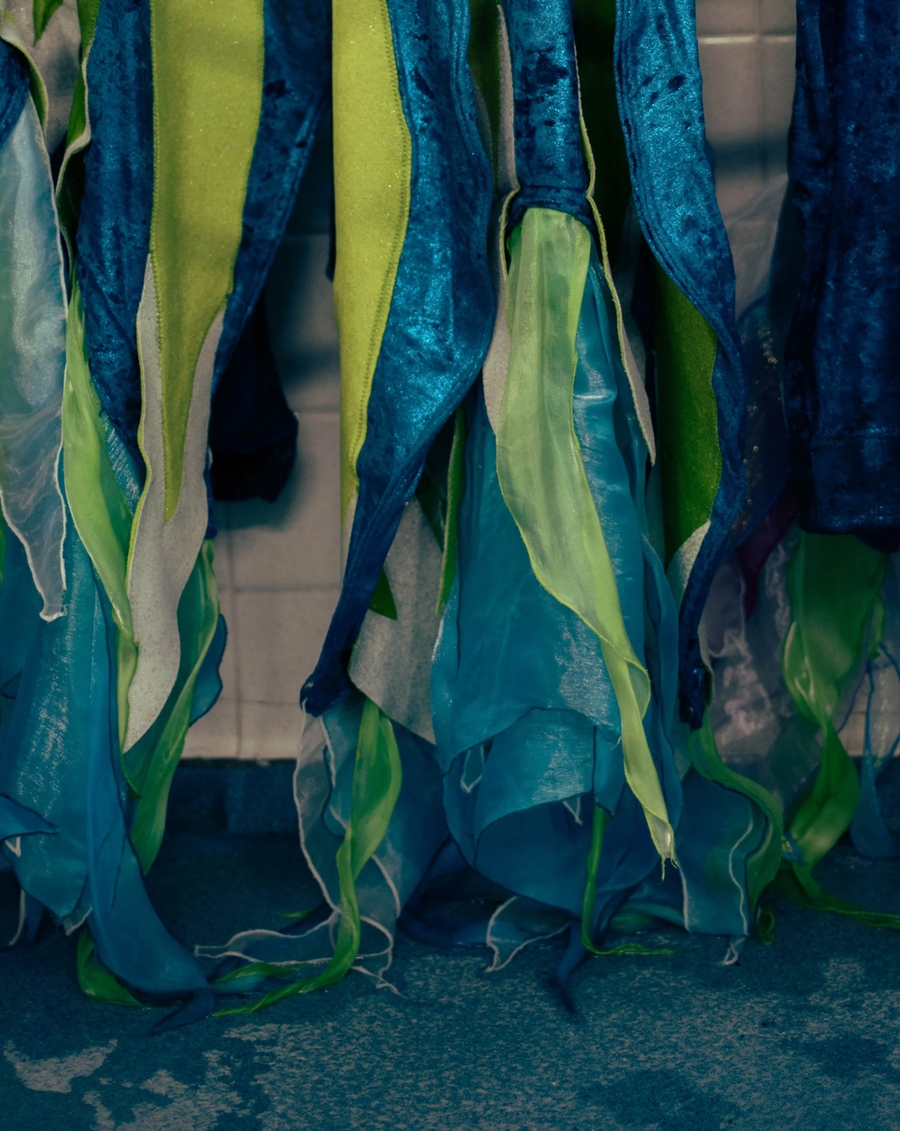
Handmade costumes
“During my time at Weeki, I sewed and mended many of the costumes,” says Elizabeth Wilder, a Florida native and former mermaid who grew up visiting the park. “The tails are made by a local seamstress to custom fit each girl. As the years go on, certain tails are passed down between generations. Instead of saying, I’m a size medium, we’d say, I’m a size Taylor. For the everyday wear and tear, we learned how to mend them on our own.”

A group with their backs to the sun
“There’s a lot of trust between mermaids,” says Wilder. “What we do is unique, and we have to be able to work together. There is a sense of family that goes beyond a normal job.”
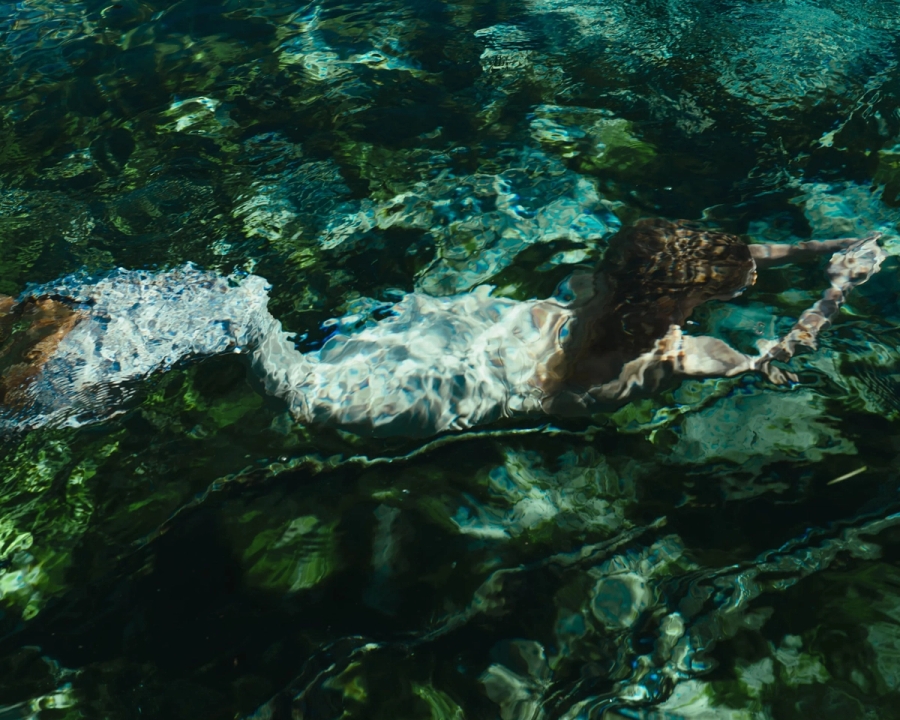
Underwater, clutching a breathing tube
“It’s like flying,” Wilder continues. “Over time, you don’t even feel like you’re underwater anymore.”
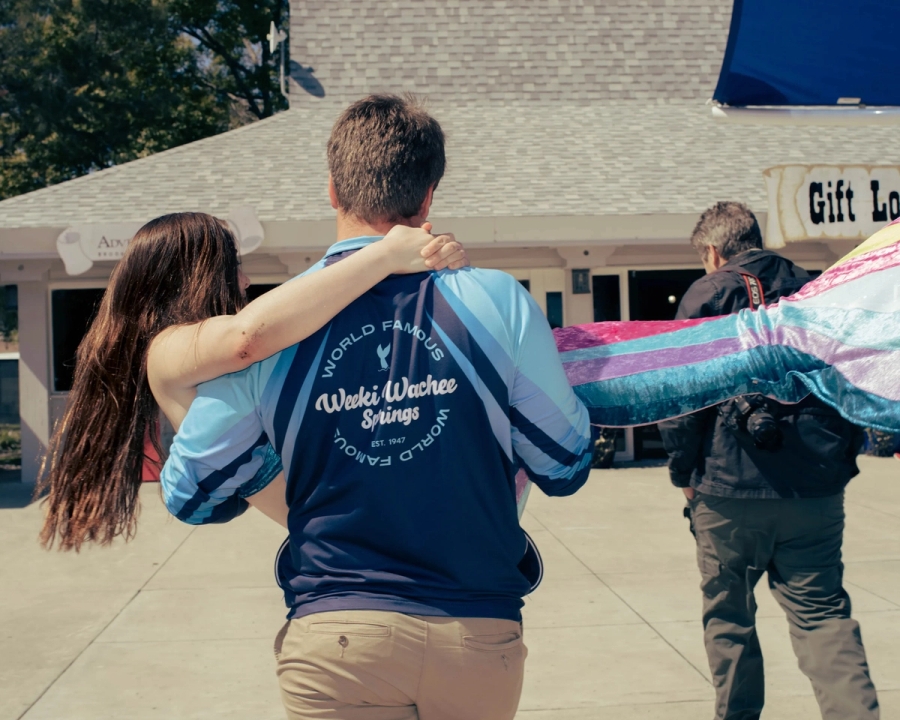
A mermaid-in-tail is carried by staff
Mermaids perform three 45-minute shows per day to a 400-seat auditorium. Alum Catherine LaMondra recalls the pre-show routine: “I’d arrive at 9am. When first starting, you’re either dry practicing choreography in front of a mirror or getting into the water to practice for the first 30 minutes. At 10am, we’d all do our makeup and discuss what color tails we were going to wear for the show. By 10:45, we would head to the back dock to put our tails on.”
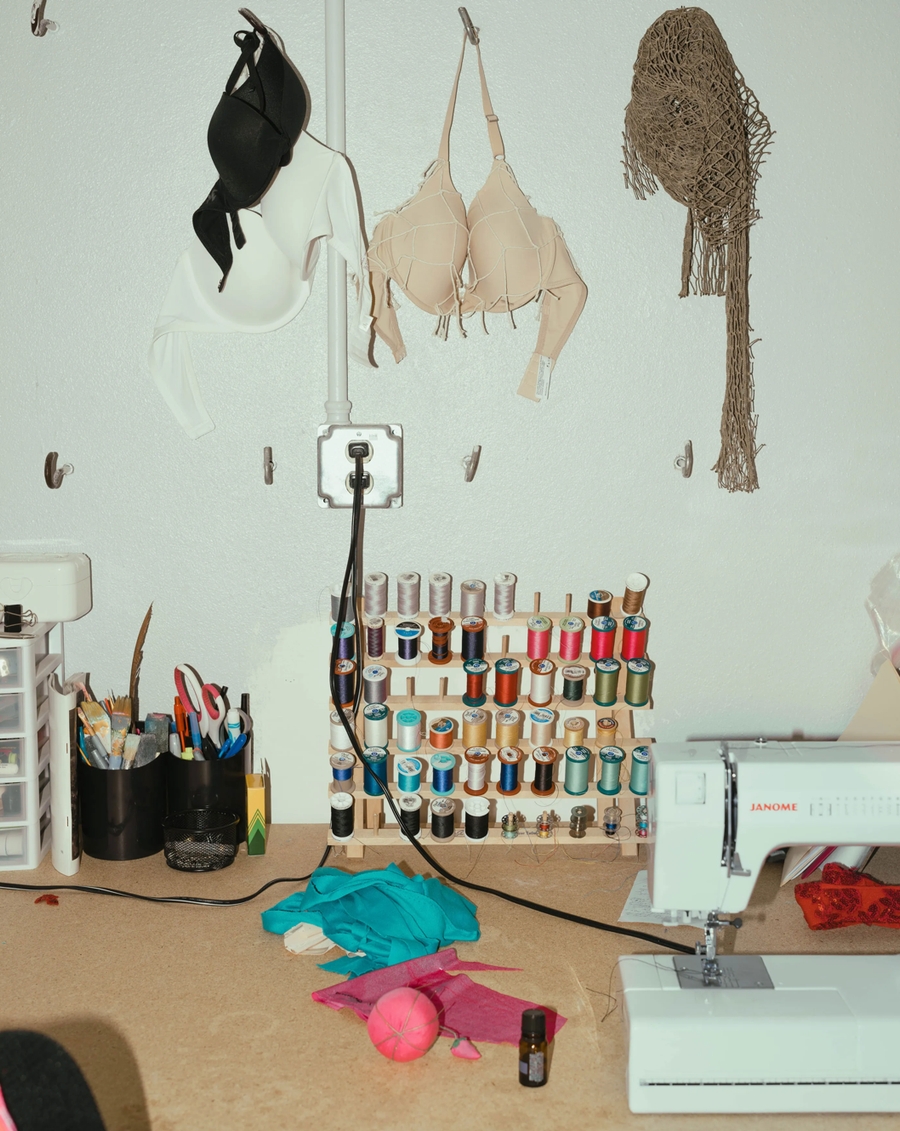
Repairs backstage
Weeki Wachee’s current mermaid auditions are a three-part process, staged once or twice each year to fill a handful of spots. (Around 50 hopefuls apply each time.) Round one involves a timed endurance swim of 400 yards. Round two sees aspiring sirens perform simple underwater skills—here, they’re judged less by technical proficiency and more by how fluidly they move through the water. The last round occurs on land: an in-person interview. After selection, training commences.
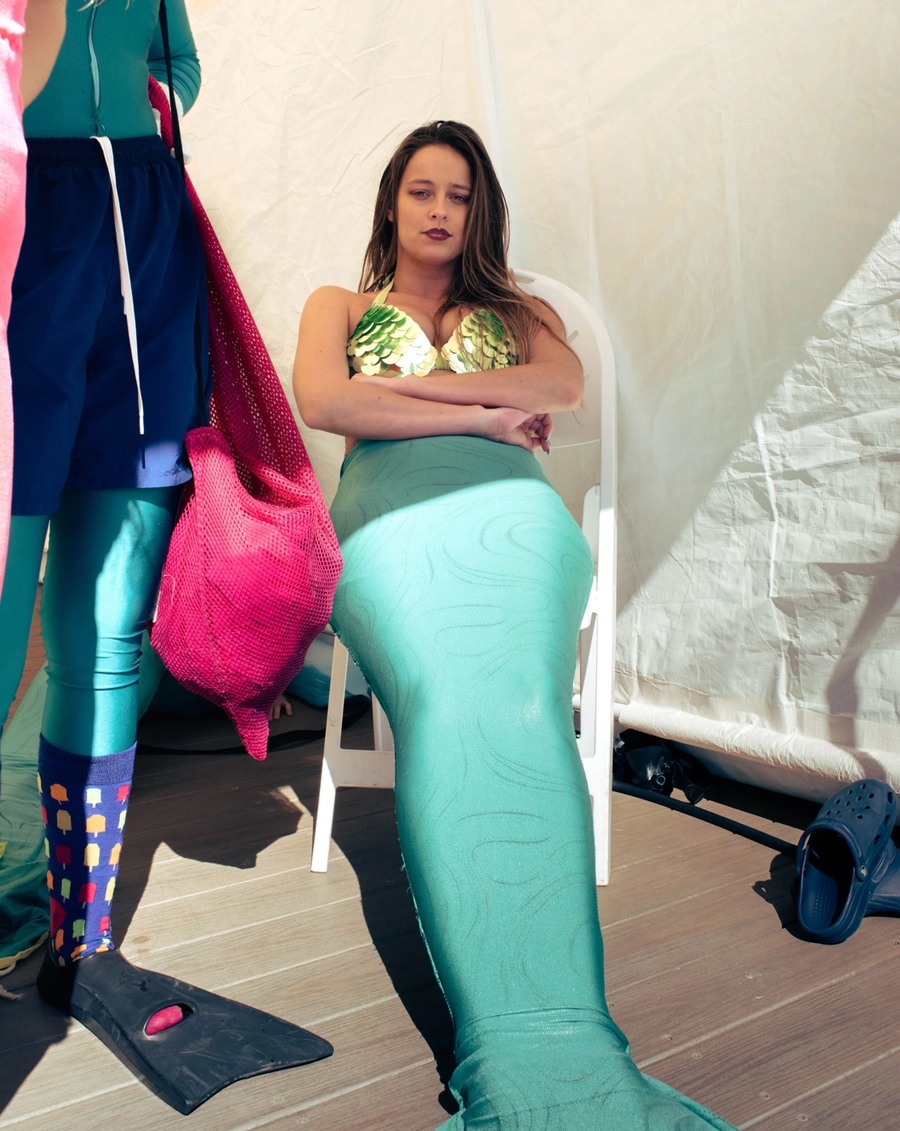
Kourtney Ellinghuysen
For Kourtney Ellinghuysen, Weeki Wachee was her first mermaid job. She swam in its deep blue for half a decade and, like many of her peers, unearthed something transformative below the waterline. “The second the water touched my skin I felt this cold blanket of weightlessness. The current in certain spots was so strong it felt like I was being pulled behind an airplane, and my hair would flow behind me so quickly. As I ascended, doing ballet and backflips, it felt like floating upward.”
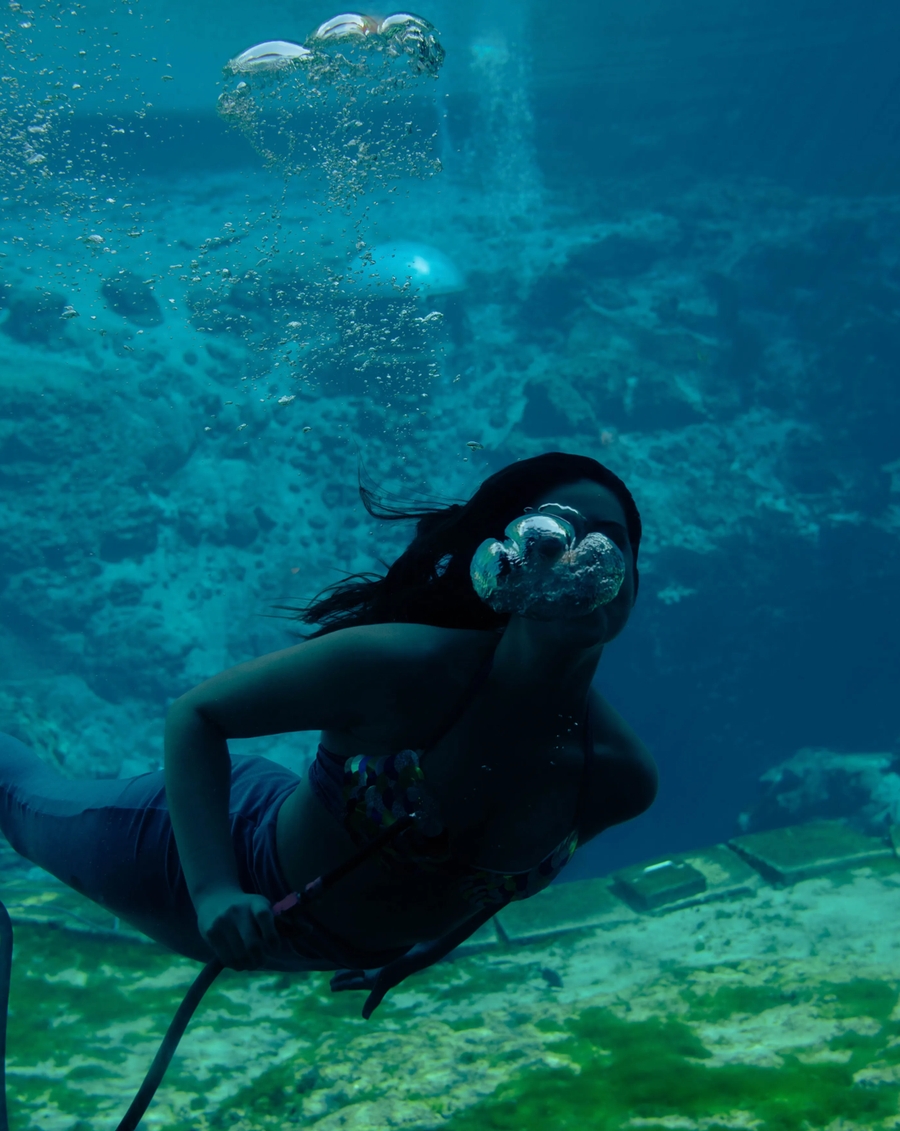
Bubbles underwater
“We learned how much the amount of oxygen in your lungs can affect things: your movement, your position in the water, and how you perform tricks. You can exhale air to make your body sink. You inhale to ride and twist,” says Ellinghuysen.

Photographs from the private collection of Vicki Smith
“I graduated high school at 17. I had been a cheerleader for all four years … Two of my closest friends had graduated the year before and were swimming at Weeki Wachi Spring as mermaids,” recalls Vicki Smith, a former mermaid. “They called me with stories of how much fun it was: meeting movie stars, having their picture taken, signing autographs. But most of all, they had discovered the magic. Their joy, excitement, and love for Weeki became mine.”
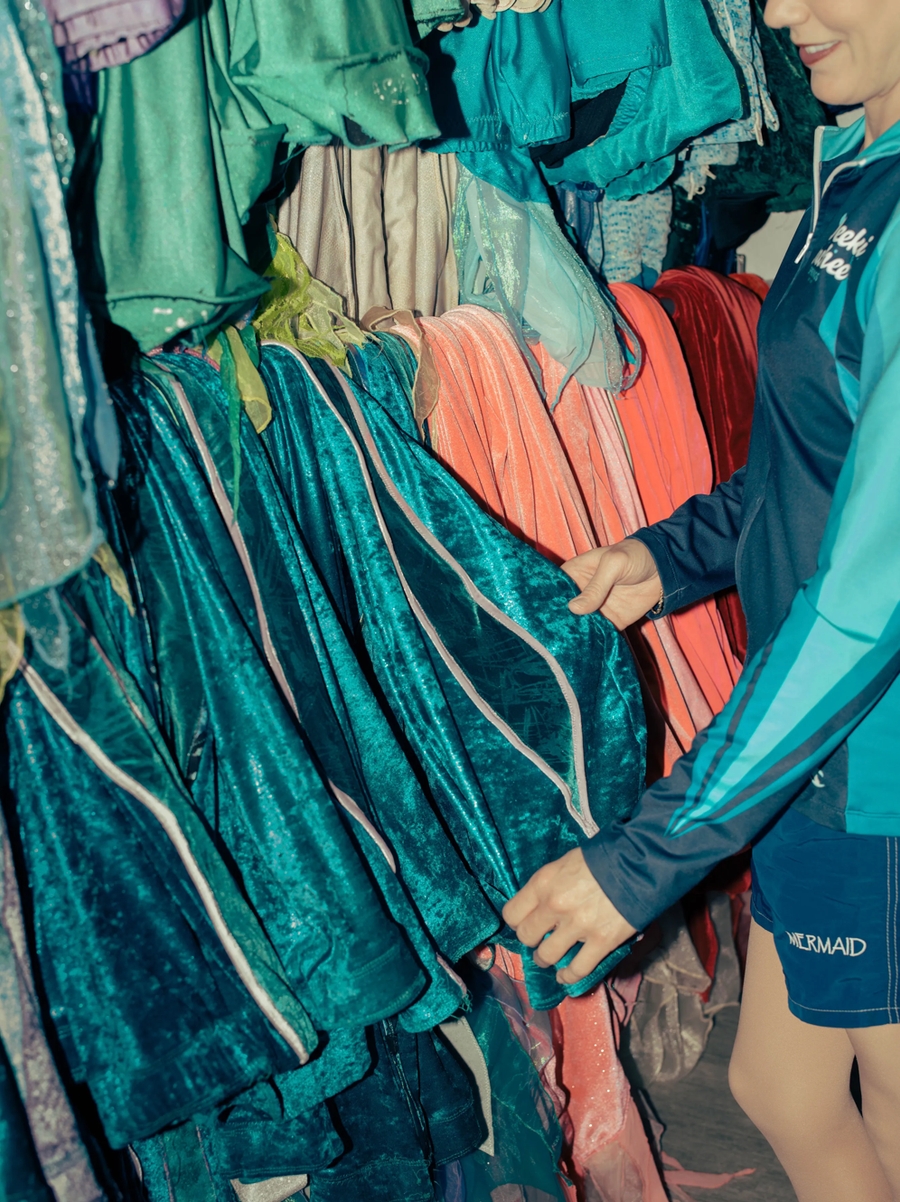
Each role has its own costume
“The training process was long and challenging,” says LaMondra. “You start out as a host and poser, and you do surface training. A host seats people in the underwater mermaid theater; a poser wears a mermaid tail and takes photos with guests. Surface training entails learning the basic moves and choreography used in the shows. About a month later we were scuba certified. Achieving ‘mermaid status’ takes up to two years. By the time I swam my first show, I was comfortable in my fabric tail. Learning to swim with your legs bound becomes second nature.”

Mermaids perform the Ferris Wheel
“The trick where we’re all connected and holding each other’s tails is called a Ferris wheel,” Ellinghuysen says. “My favorite was a Ferris wheel with legs—switching leg positions while we’d paddle around.”
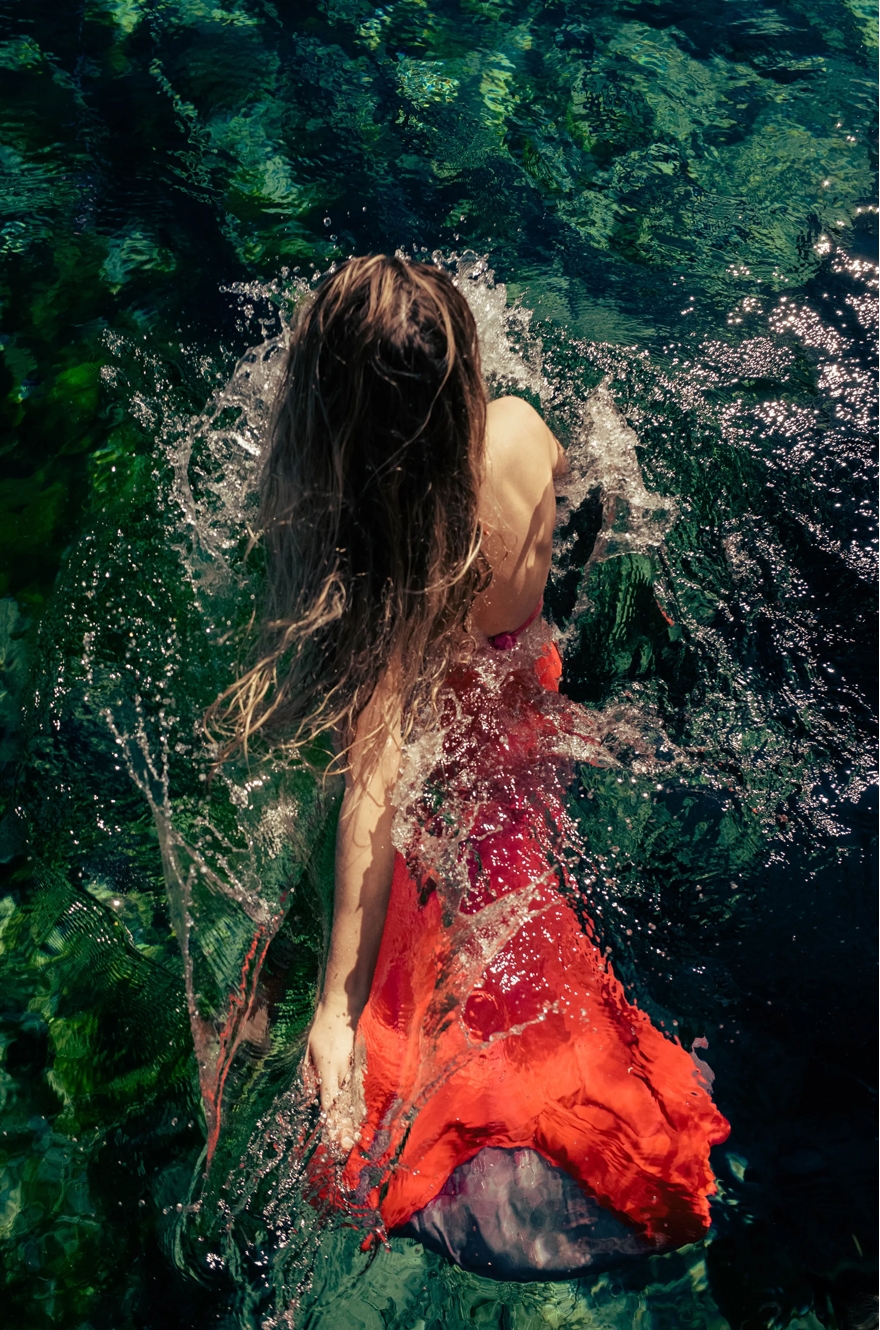
A performer swims in their tail
“When you’re first training, it’s so hard to remember to put every element together,” LaMondra explains. “There’s the choreography, breathing, keeping your face relaxed, then smiling, singing the words, the placement of the air hose, buoyancy, awareness of where the other girls are, and timing. When you’re a senior mermaid, you can definitely have more fun with it.”
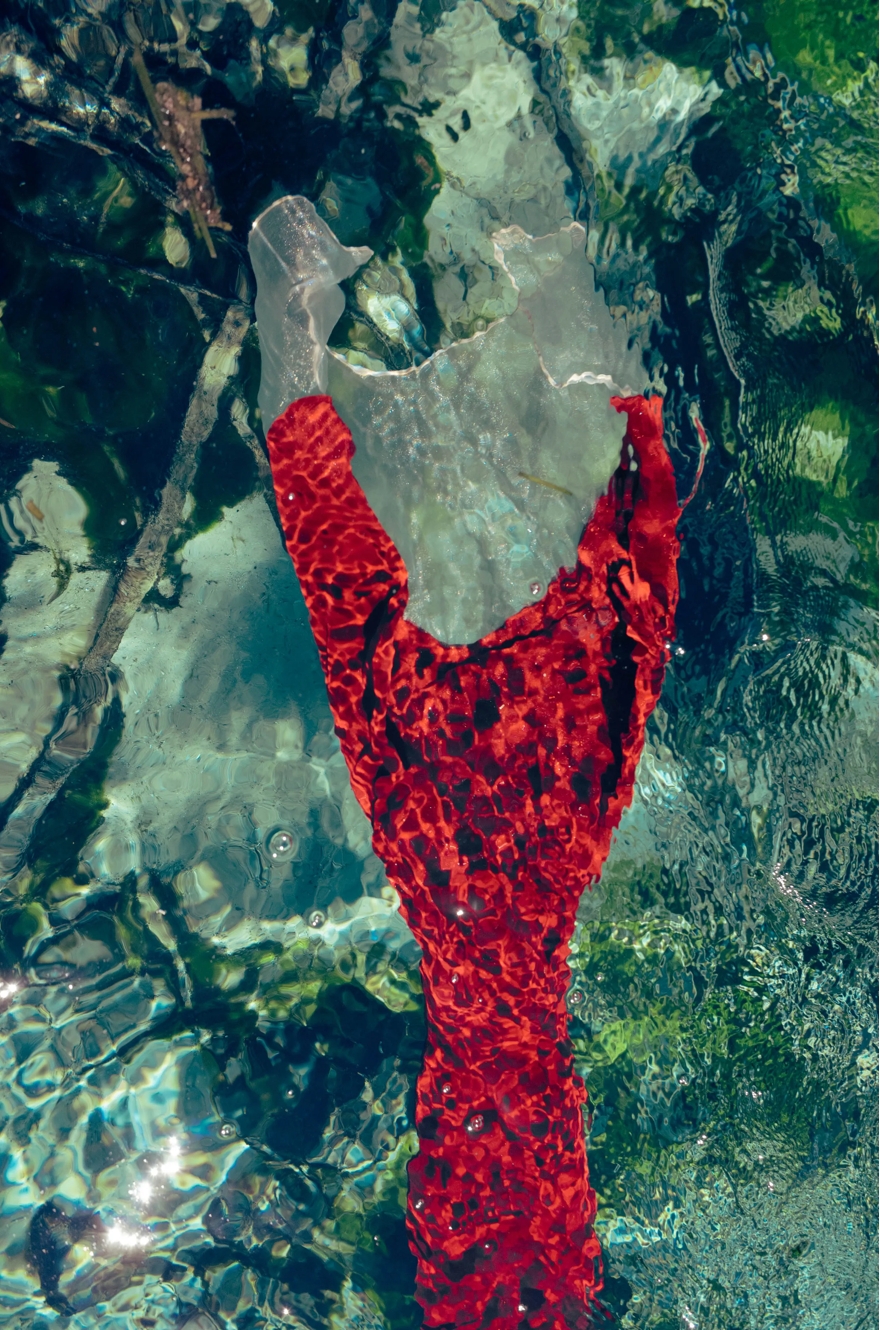
Clear Week Wachee waters
“There’s a time of day,” Smith explains, “about 2 p.m. or 3 p.m. on a clear day, when the sun shoots rays down into the deep hole. The movement of the boil makes it dance and sway. There are days when it rains and you can look up to the surface and see a jillion dancing stars as the droplets hit the surface. But the best of all—the most joyous, peaceful, and unforgettable of my experiences as a mermaid—is being the last one out after everyone else has exited. I don’t want to leave, but I know I must.”
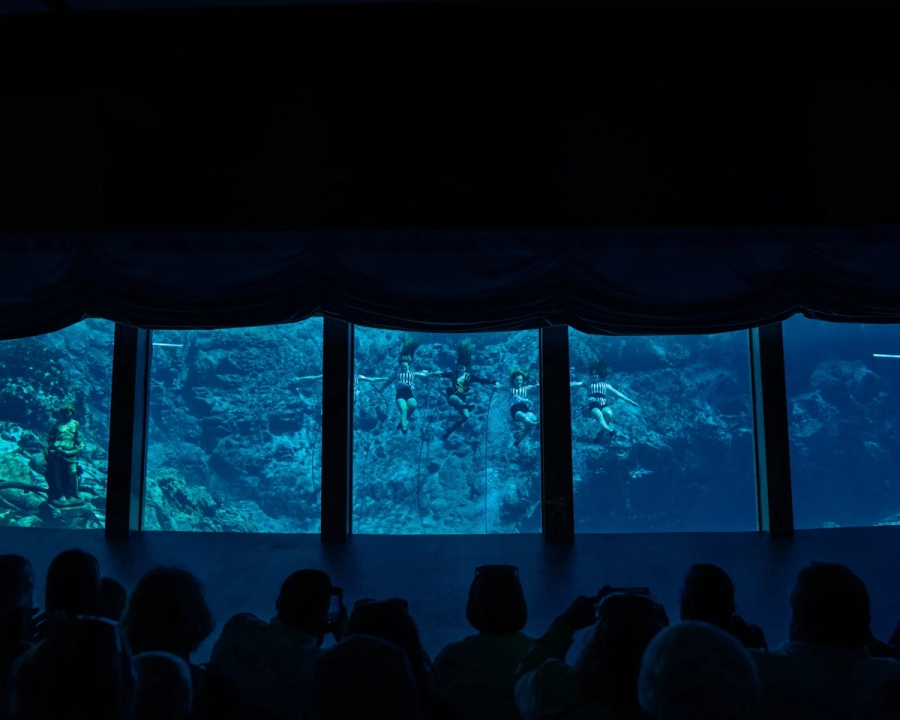
The underwater theatre
“When ABC bought out the spring in 1959, everything changed! We had beautiful fancy swimsuits,” Smith remembers. “A retired Rockette from New York came to teach us ballet moves. She also created the first costumed show, The Mermaids and The Pirates … I remember swimming for Elvis in ’61—he was very soft spoken and polite. He gave each one of us an autographed album of his recent hits. Mine said, ‘To Vicki, Best regards, Elvis.'"
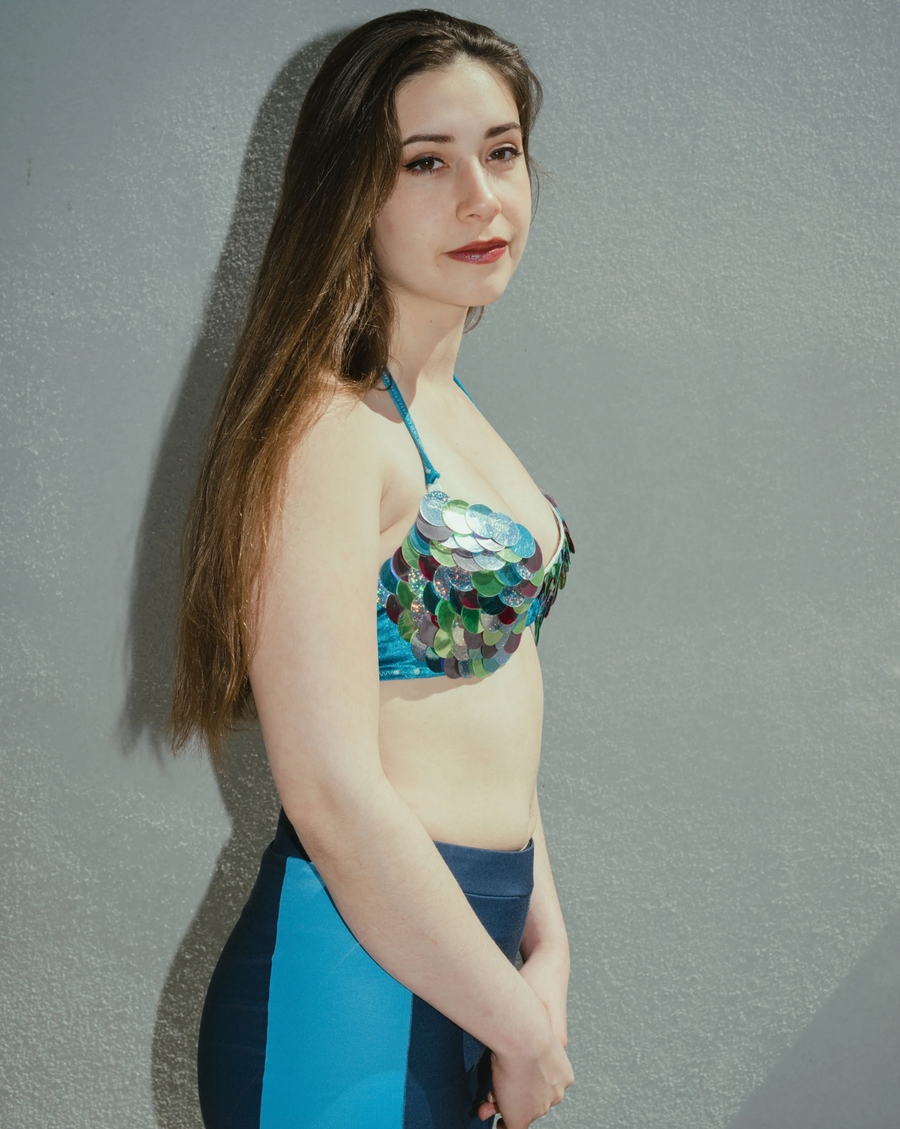
Elizabeth Wilder
“My mom inspired me to audition,” says Wilder. “She wanted to be a mermaid when she was my age but never got the chance—they were closed auditions back then. She was a great swimmer and scuba diver, so she taught me how to swim when I was young. I have fond memories of having underwater tea parties with her at the bottom of our pool. In 2019, my mom saw auditions being advertised to the public and asked me to do it for her. The further I got in the process, the more I fell in love with it.”
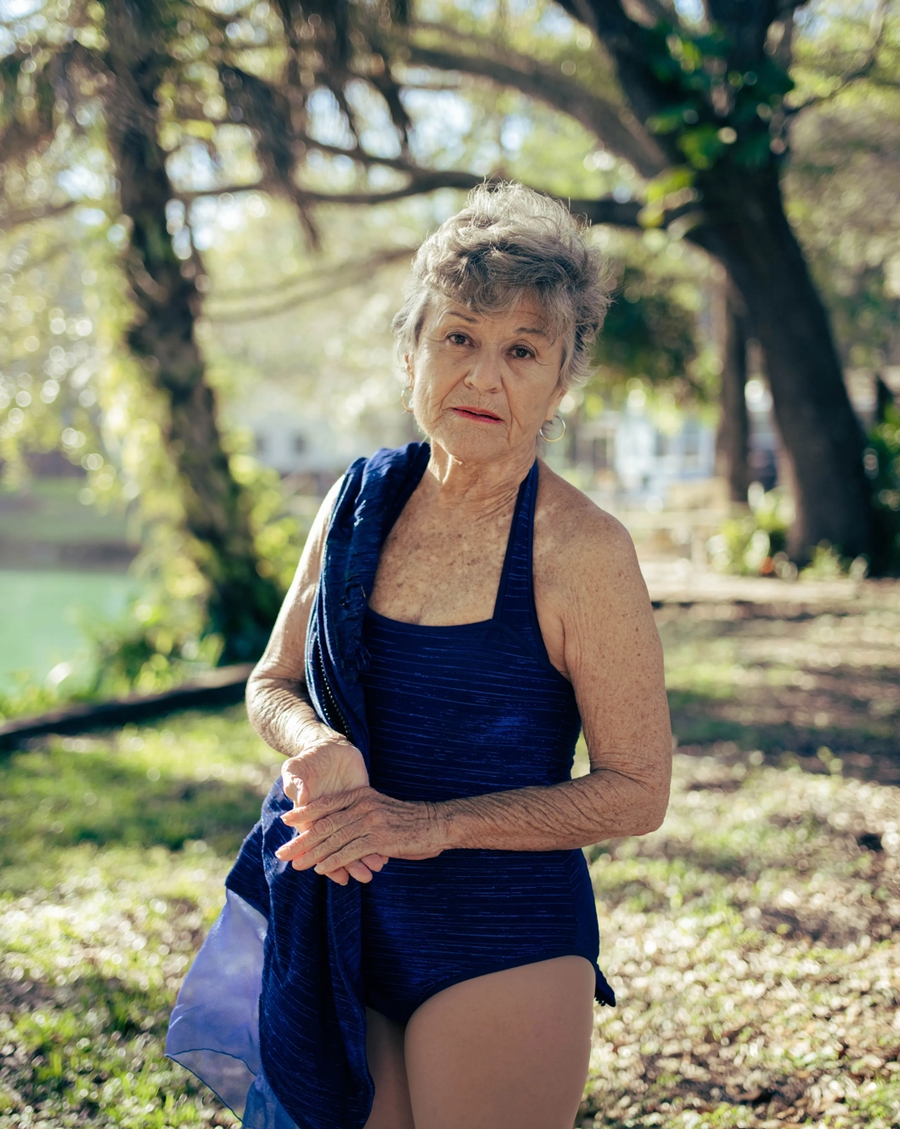
Vicki Smith
Smith began at the park in 1957, and until recently, she still performed sporadically as part of the Legendary Sirens. “Sometimes people don’t quite understand when we say: ‘Once a mermaid, always a mermaid.’ But the mermaids of Weeki Wachee springs are the only people in the world that have experienced the joy of floating weightlessly in a 72-degree freshwater single spring. All I ever dreamed about was getting back into Weeki one more time. The freedom of weightlessness. The quiet. The feel of water on your body. Even with the blurred vision, it is heaven on earth.”
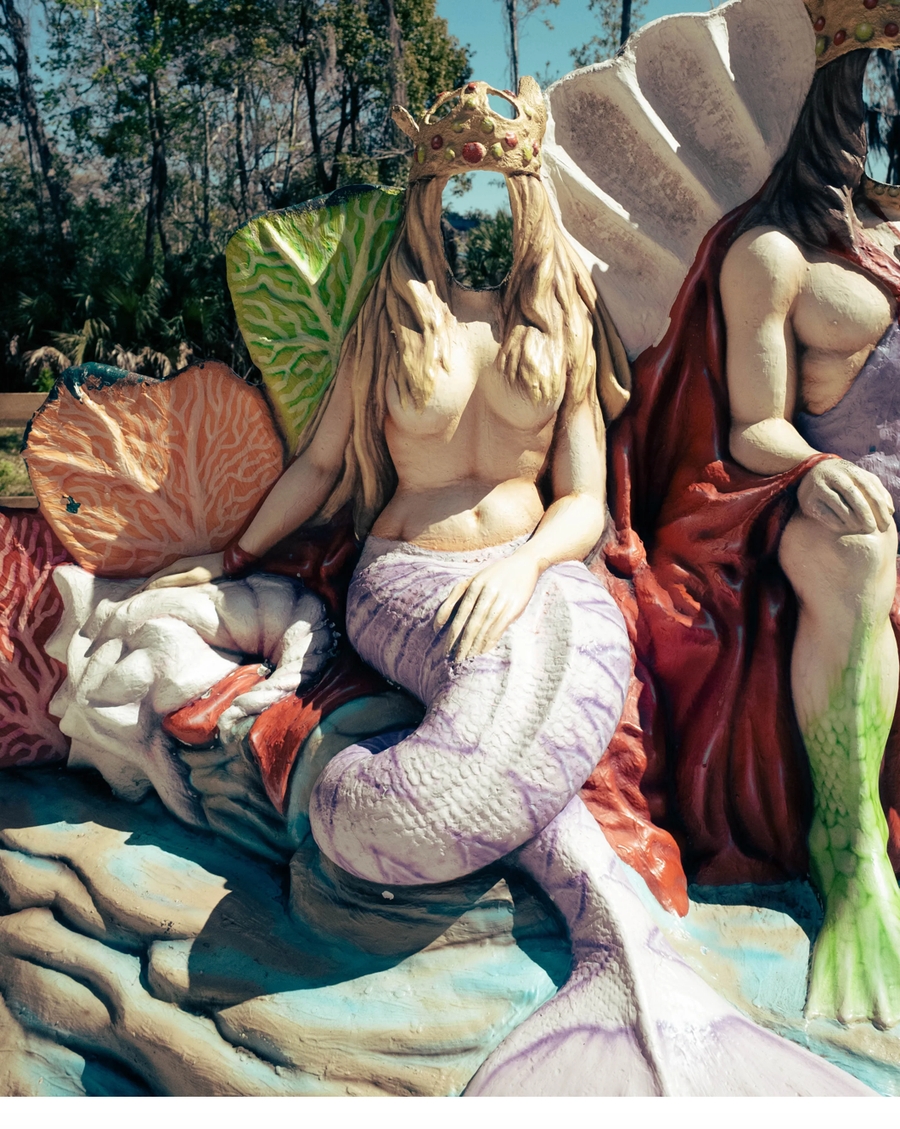
All photos by Chantal Anderson
“I recognize the online mermaid community and lifestyle,” says LaMondra. “However, Weeki Wachee mermaids are world-famous. I feel like we are set apart, the elite … Being a mermaid will never be ‘just a job.’ I am truly honored to have been a part of history. I will cherish my days there for as long as I live.”
thecut.com/2023/03/mermaids-weeki-wachee-springs-state-park-photo-essay.html